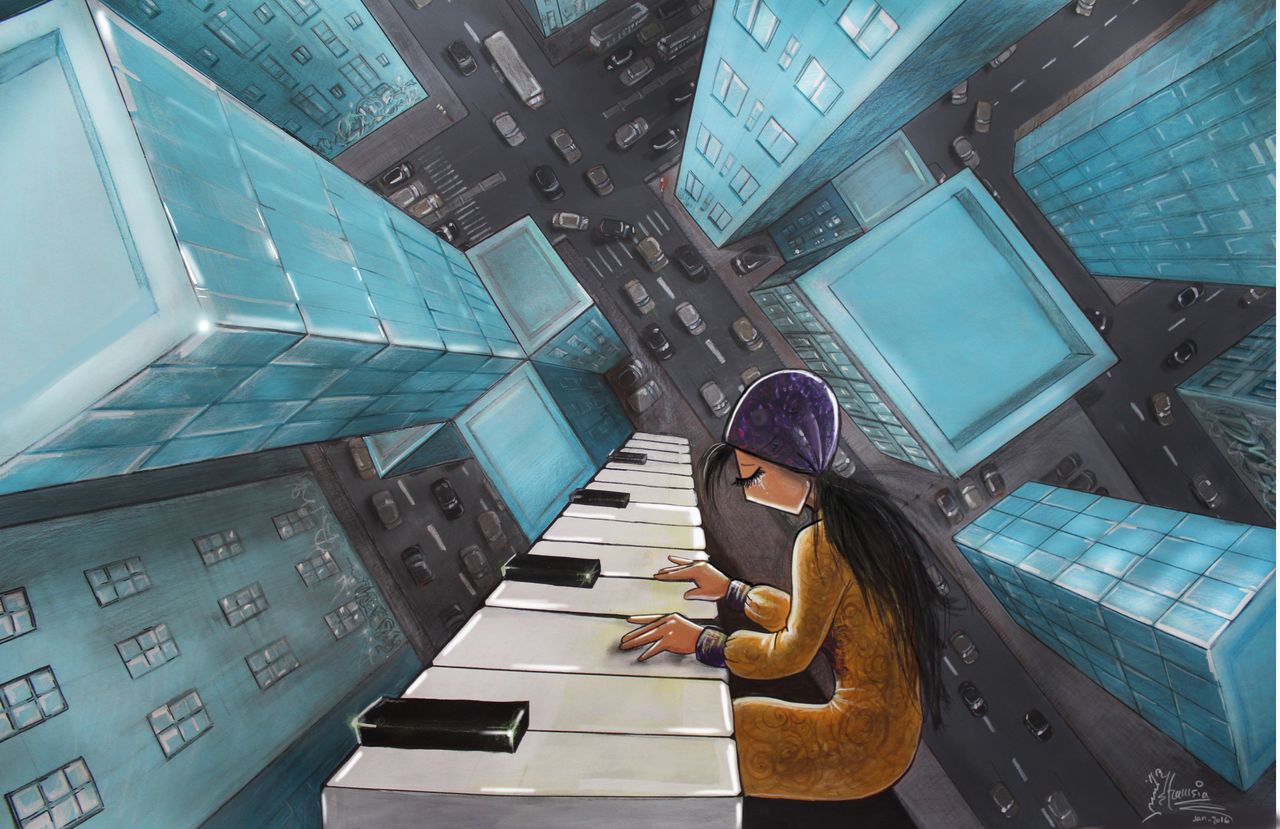A woman in a purple hijab sits playing the piano, a tear rolling down her cheek. She plays her solitary tune amongst a sea of blue skyscrapers, soaring above the cars that zoom beneath her unnoticed. This subject already wears her contradictions proudly -- she is strong, she is vulnerable, she is graceful, creative, separate, sad. And yet, at least it seems, she calls out to no one, content to sit with her feelings and express herself creatively, freely, in peace.
This work of street art was made by Shamsia Hassani, widely known as the first prominent woman street artist in Afghanistan. Hassani was born in 1988 in Tehran to Afghan parents, eventually moving to Kabul to pursue her bachelor's and master's degrees in visual art. She currently resides in Kabul, where she turns the city's walls into colorful canvases that spread a message of peace and hope to her community.
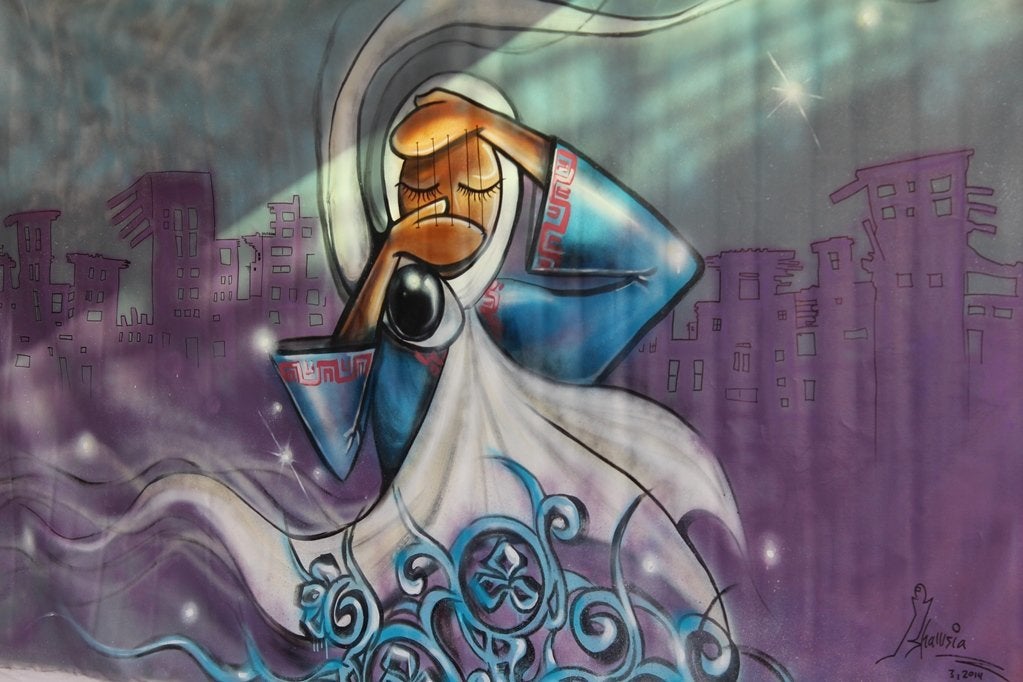
Through her work, Hassani hopes to present a different view of Afghanistan -- one not easily equated with war and violence but beauty and art. "I want to cover all bad memories of war from people’s minds with colors," she said in an interview with Street Art Bio.
As if Hassani isn't taking on enough of a challenge, she's subtly subverting dominant gender norms in the process.
"I have changed my images to show the strength of women, the joy of women," Hassani explained in an interview with Art Radar Journal. "In my artwork, there is lots of movement. I want to show that women have returned to Afghan society with a new, stronger shape. It’s not the woman who stays at home. It’s a new woman. A woman who is full of energy, who wants to start again. You can see that in my artwork, I want to change the shape of women. I am painting them larger than life. I want to say that people look at them differently now."
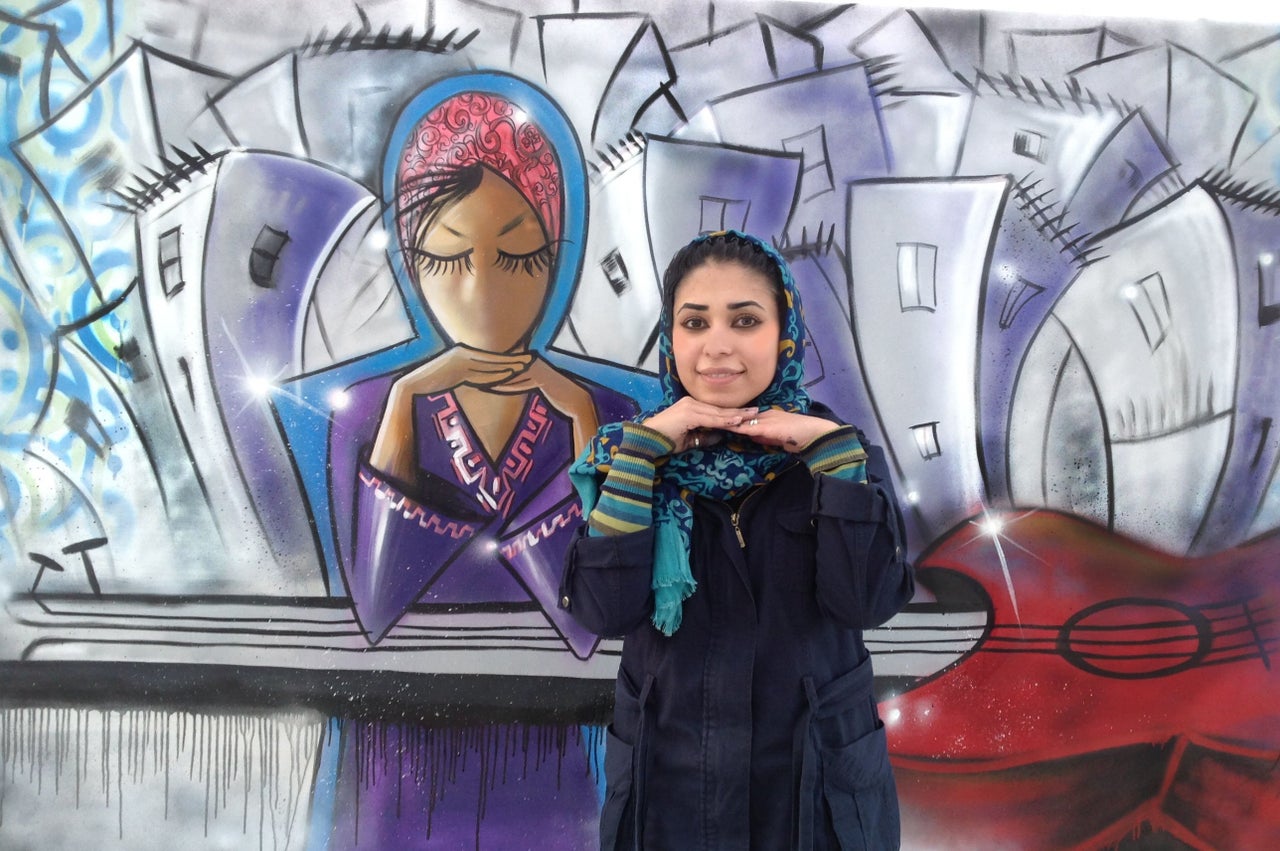
Hassani's subjects sometimes don burqa and hijab, customary Islamic garments that, in Hassani's drawings, become playgrounds for shape, line and color to take on a modernist grace. Most importantly, the images refute some dominant Western assumptions, showing that there can be freedom within tradition.
"There are a lot of people around the world who think that the burqa is the problem," Hassani said. "They think that if women remove the burqa, then they have no problems. But this is not true. I feel that there are lots of problems in Afghanistan for women. For example, when women cannot have access to education; this is more of a problem then wearing a burqa."
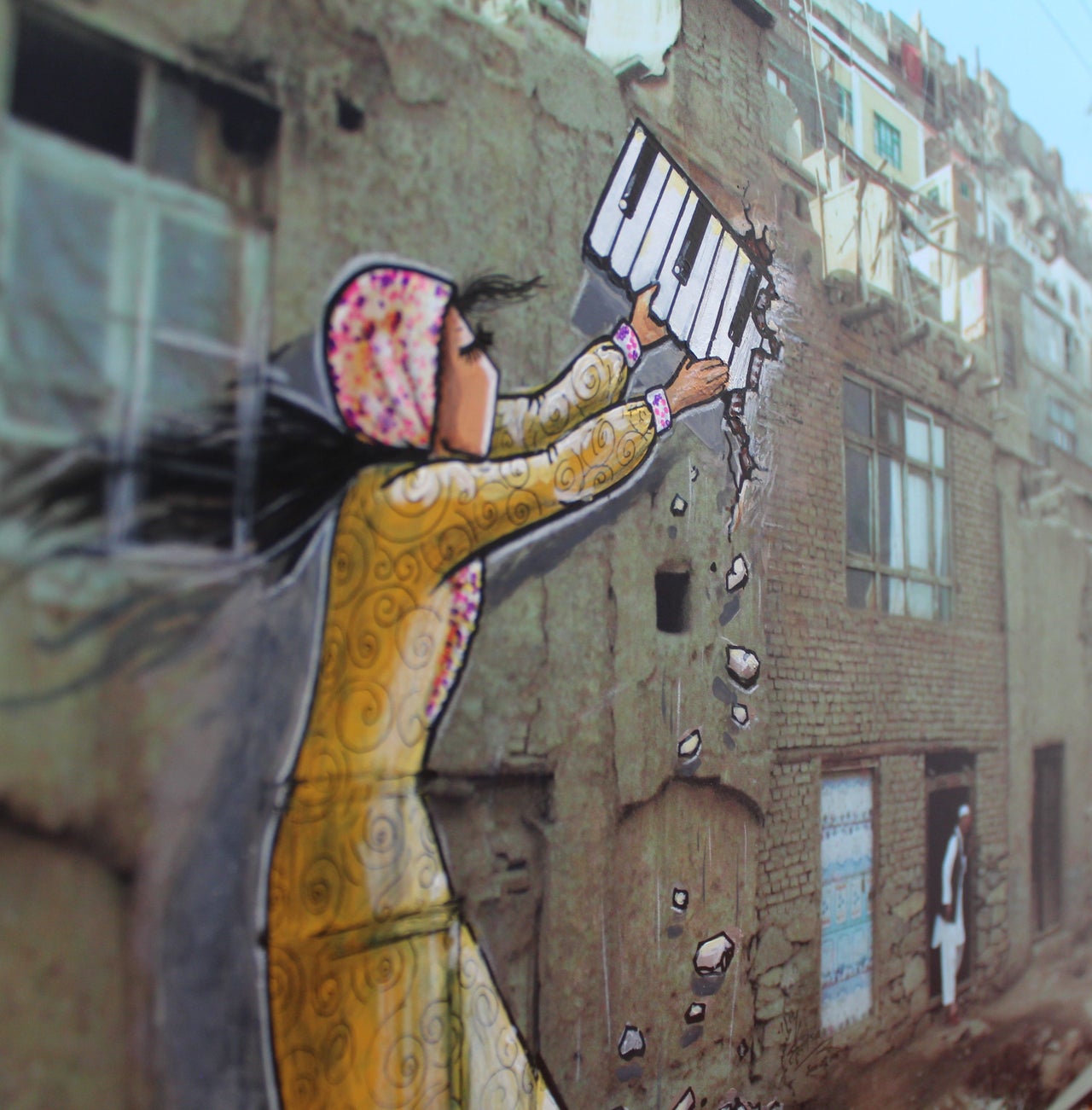
Hassani creates a new work of graffiti approximately once every two to three months. While in the U.S. and much of Europe, graffiti is treated as a crime, the technique is embraced in Afghanistan. Hassani also teaches graffiti at the University of Kabul, where most of her students, in their 20s, are around her age.
Art galleries are scarce in the region, but barren walls are in abundance, making graffiti an ideal way to expose art to a wide, if accidental audience. However, Hassani does encounter difficulties creating work as a woman, and is often forced to confront an ugly majority that believe a woman's place is in the home. Because of the struggles arising from sexist beliefs, Hassani developed a practice she calls "dreaming graffiti" -- work made in the studio instead of on the streets. With this technique, Hassani uses digital images as her cityscape, painting over them to create a colorful landscape inside her mind.
Hassani is currently the artist-in-residence at the Hammer Museum in Los Angeles. Read on for the artist's descriptions of three of her graffiti series, "Secret," "Birds of No Nation" and "Once Upon a Time."

Secret
"I began this series by outlining the figures of women in burqas with straight lines and sharp edges, conveying a feeling of strength. Still, I wanted to show the secret beneath the burqa, which is that there is a real person inside. I wanted to remove the restrictions on women and the guitar represents her ability to speak up and express herself. It is red because the color is used to draw attention to important things in Afghanistan."
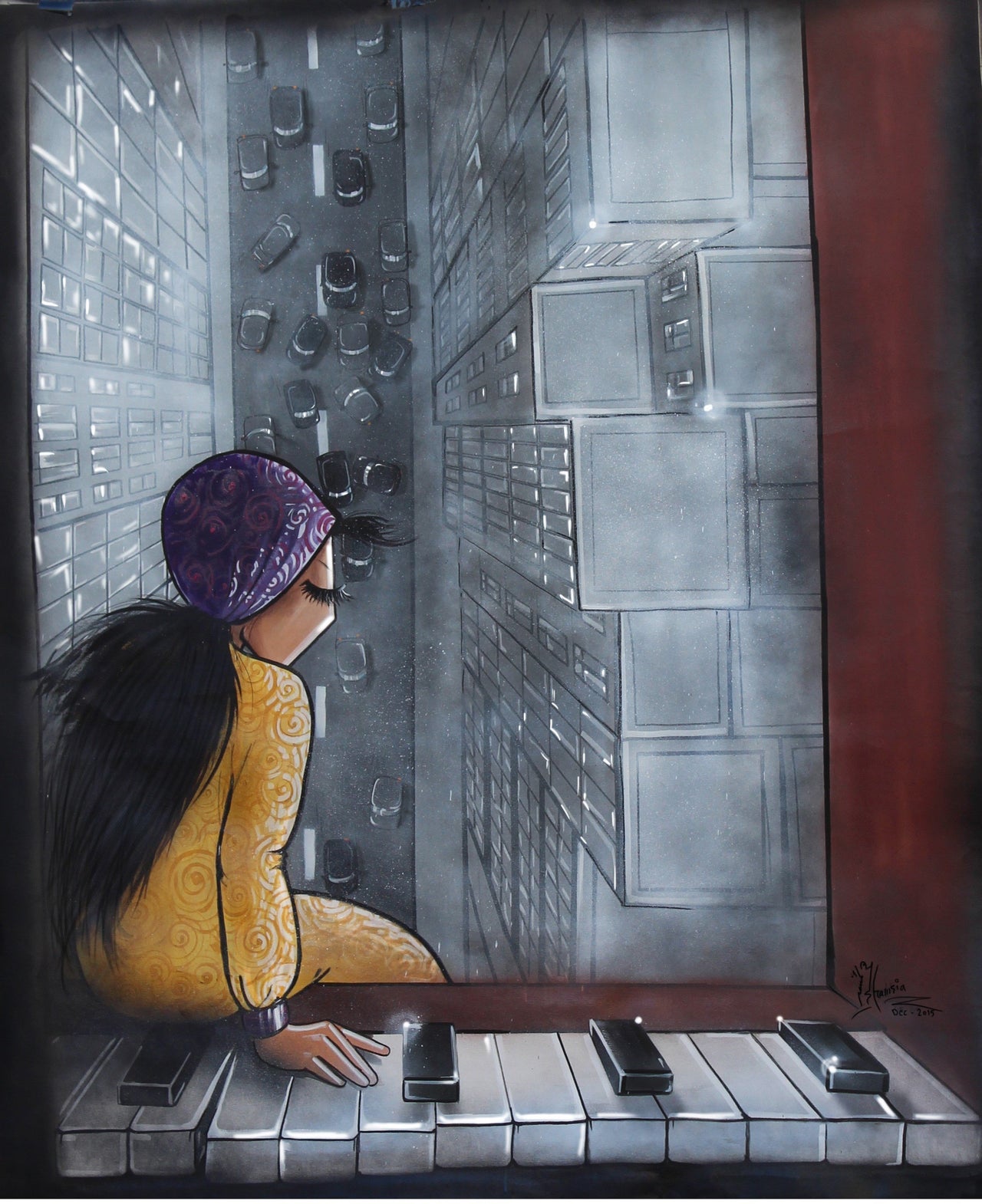
Birds of No Nation
"Birds are constantly migrating to find food and shelter, they have no nationality because they find comfort in any safe place. I see this in the Afghan people as well, they are moving from country to country in search of peace and safety. It seems as if they have no nation like those birds. In this series, the woman is in a new area and she is feeling displaced because nothing is hers and so she does not fit in."
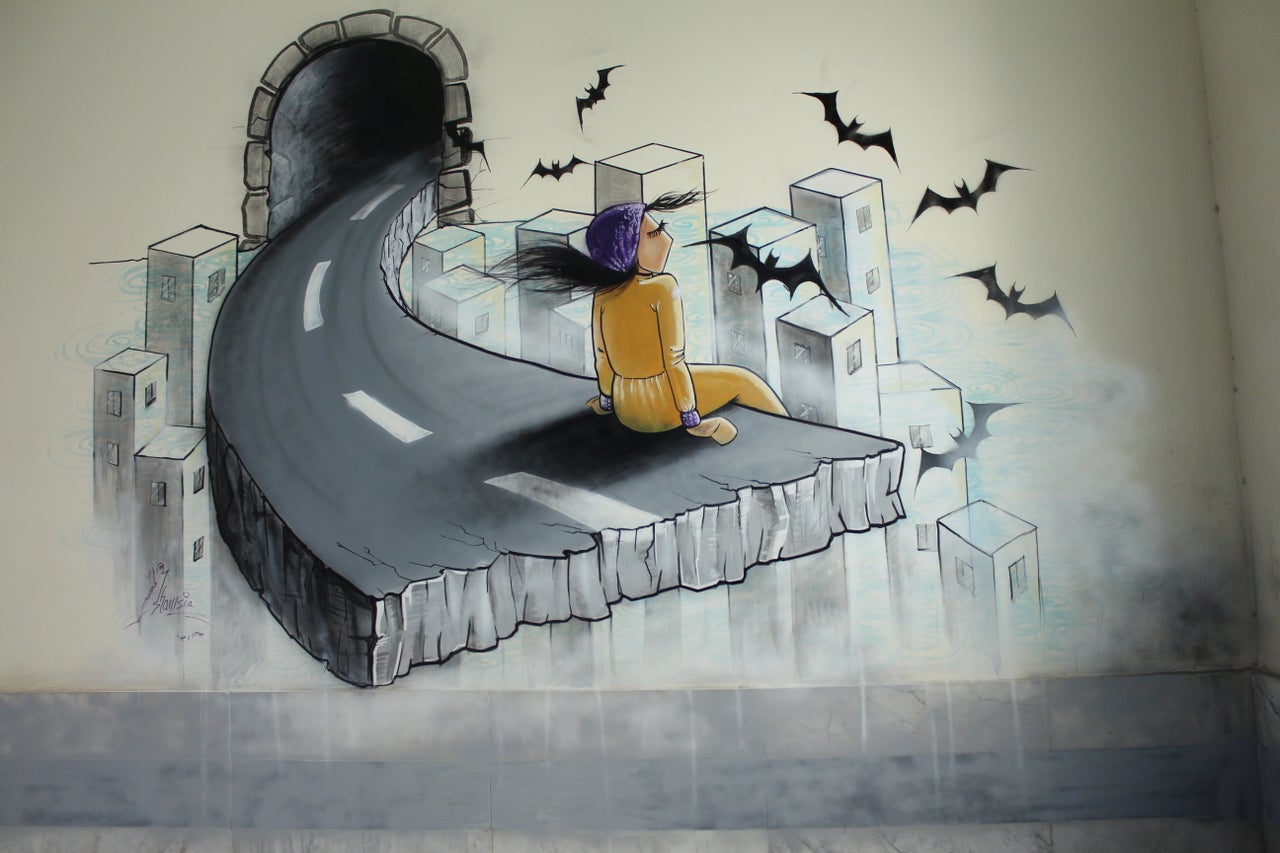
Once Upon a Time
"The title comes from the traditional way of telling a story. My tale is of a woman living in the past and present at once. This woman has tried to free herself from her unhappy situation and so she is sitting above it all, looking in from the outside. The city view is in black-and-white, representing the way that we see the past, while she is in full color and in the present."
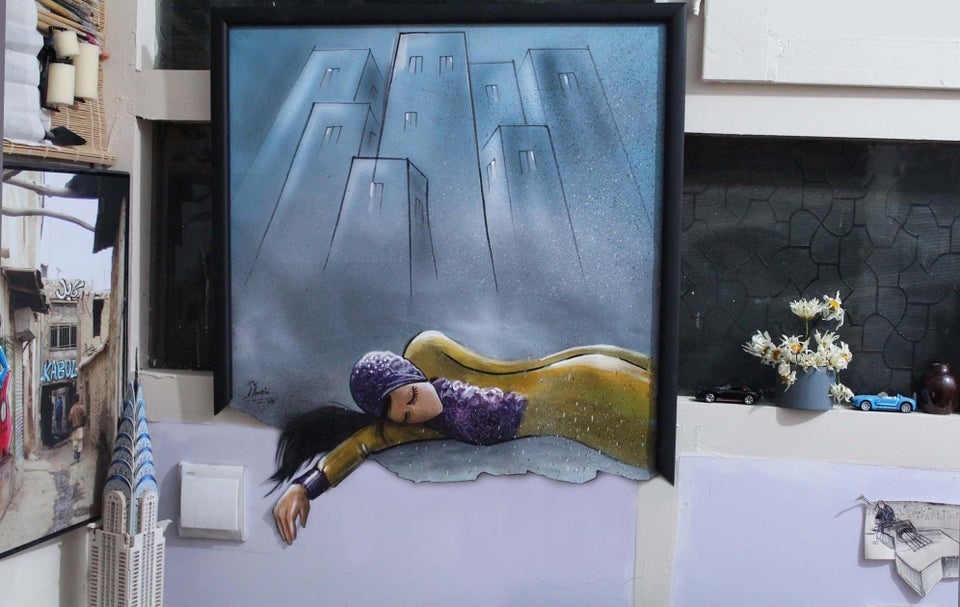
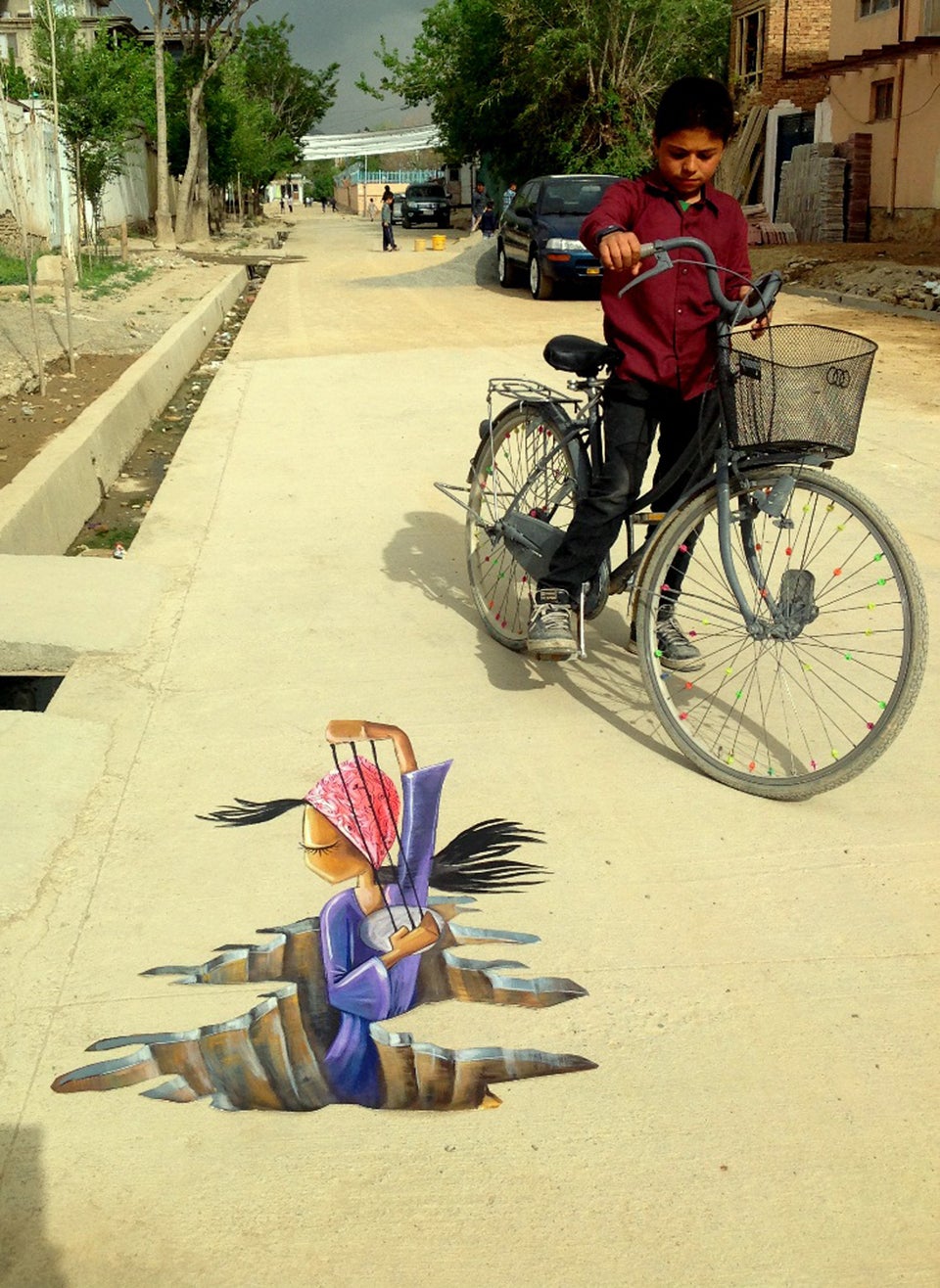

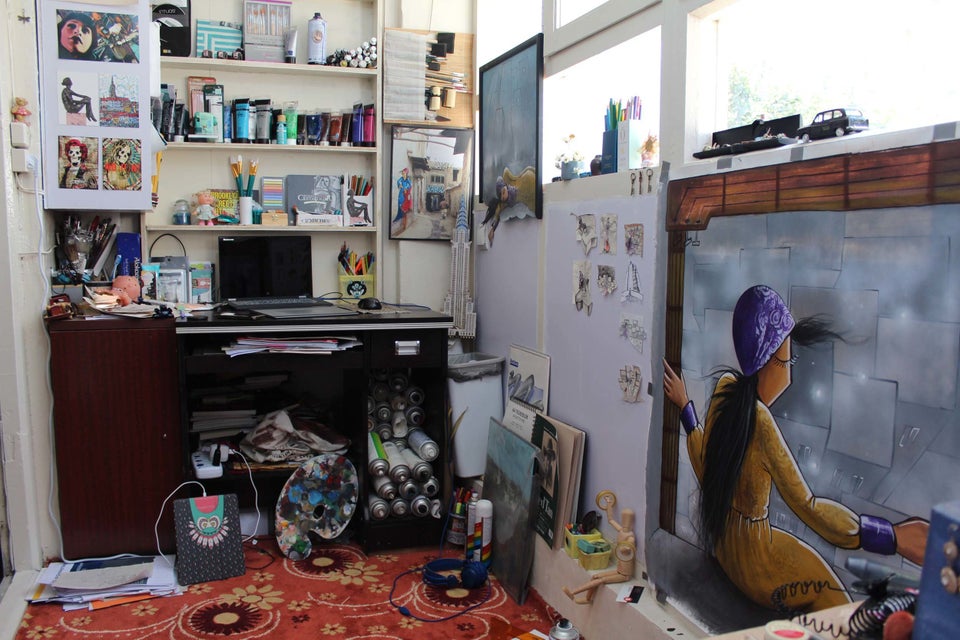
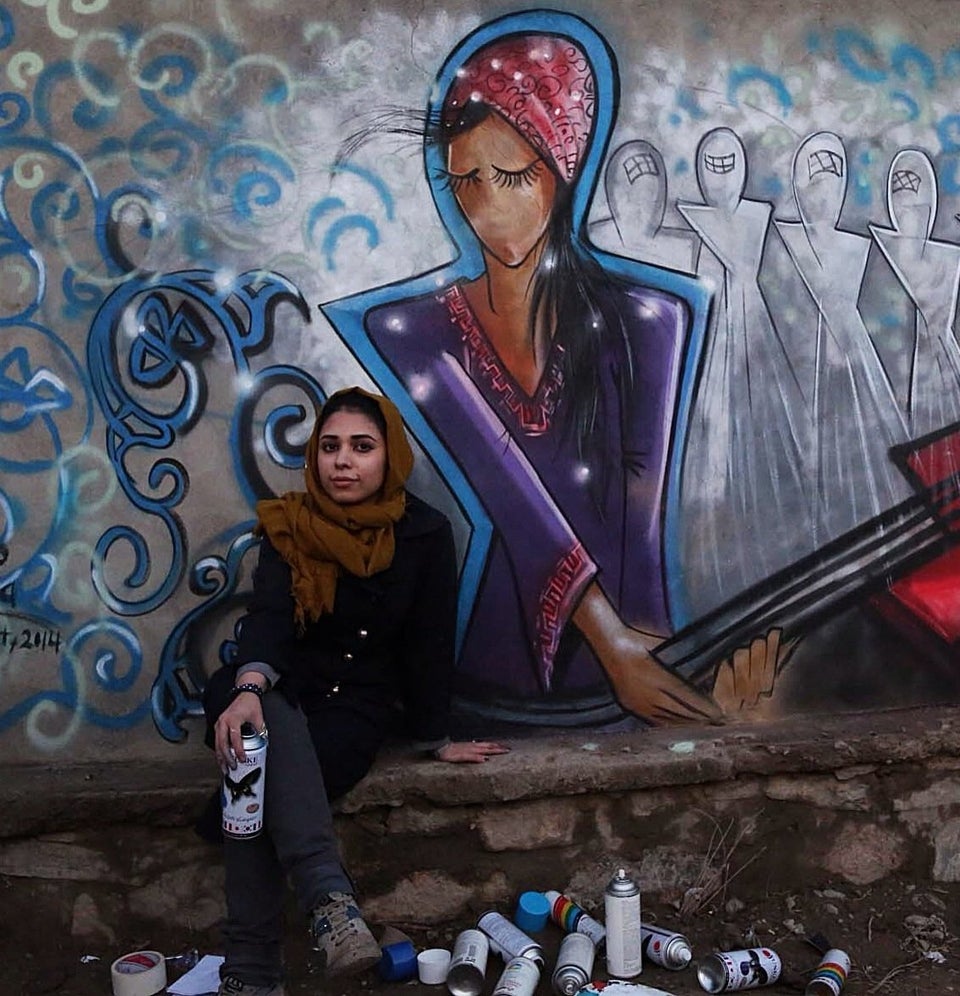
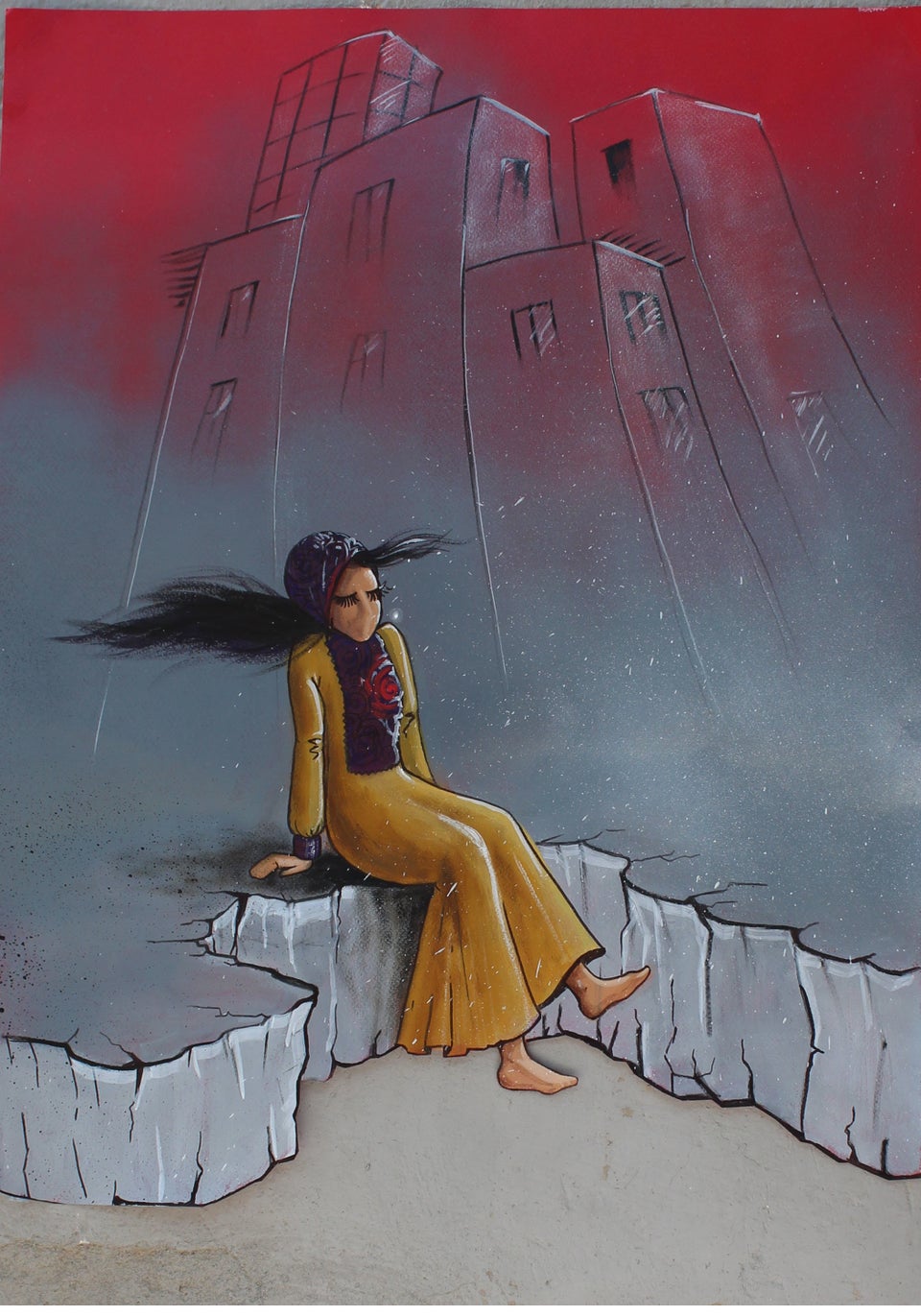

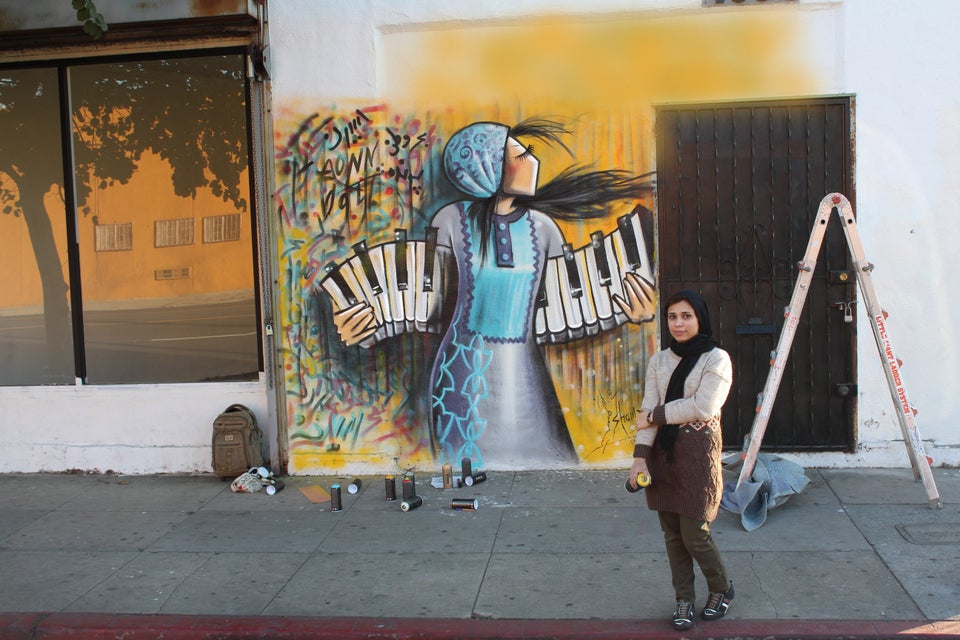
Also on HuffPost:
